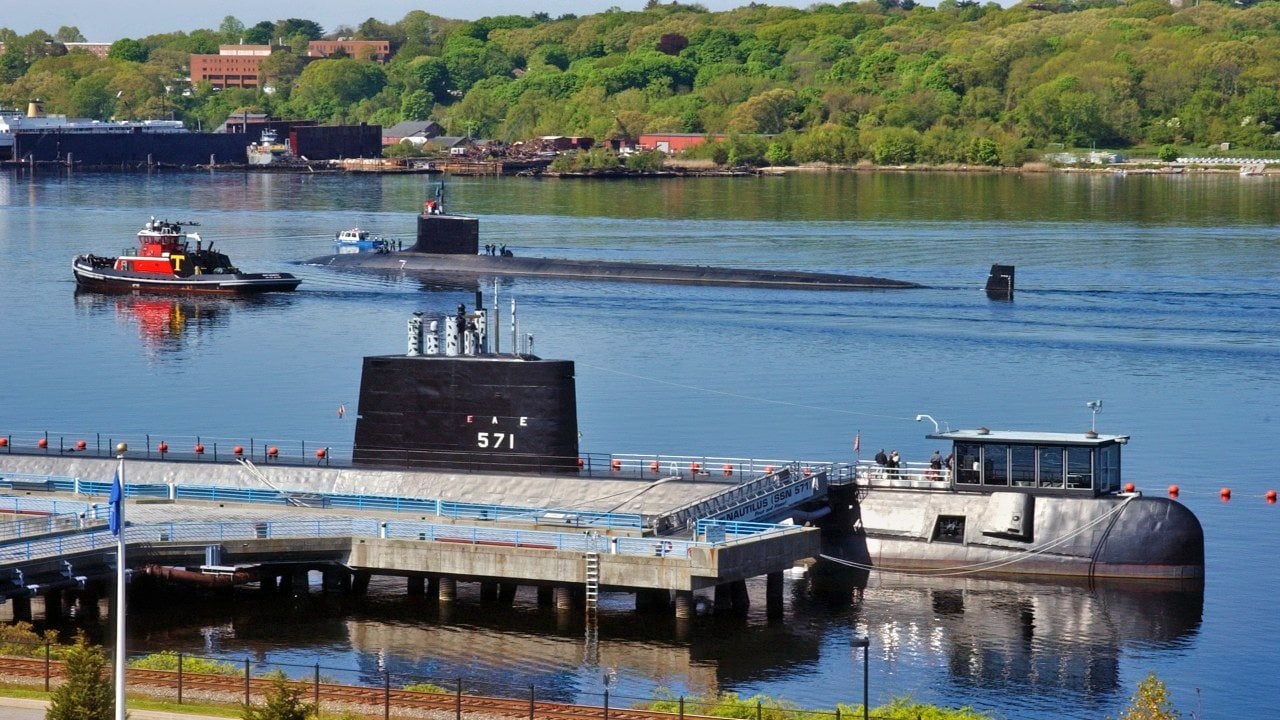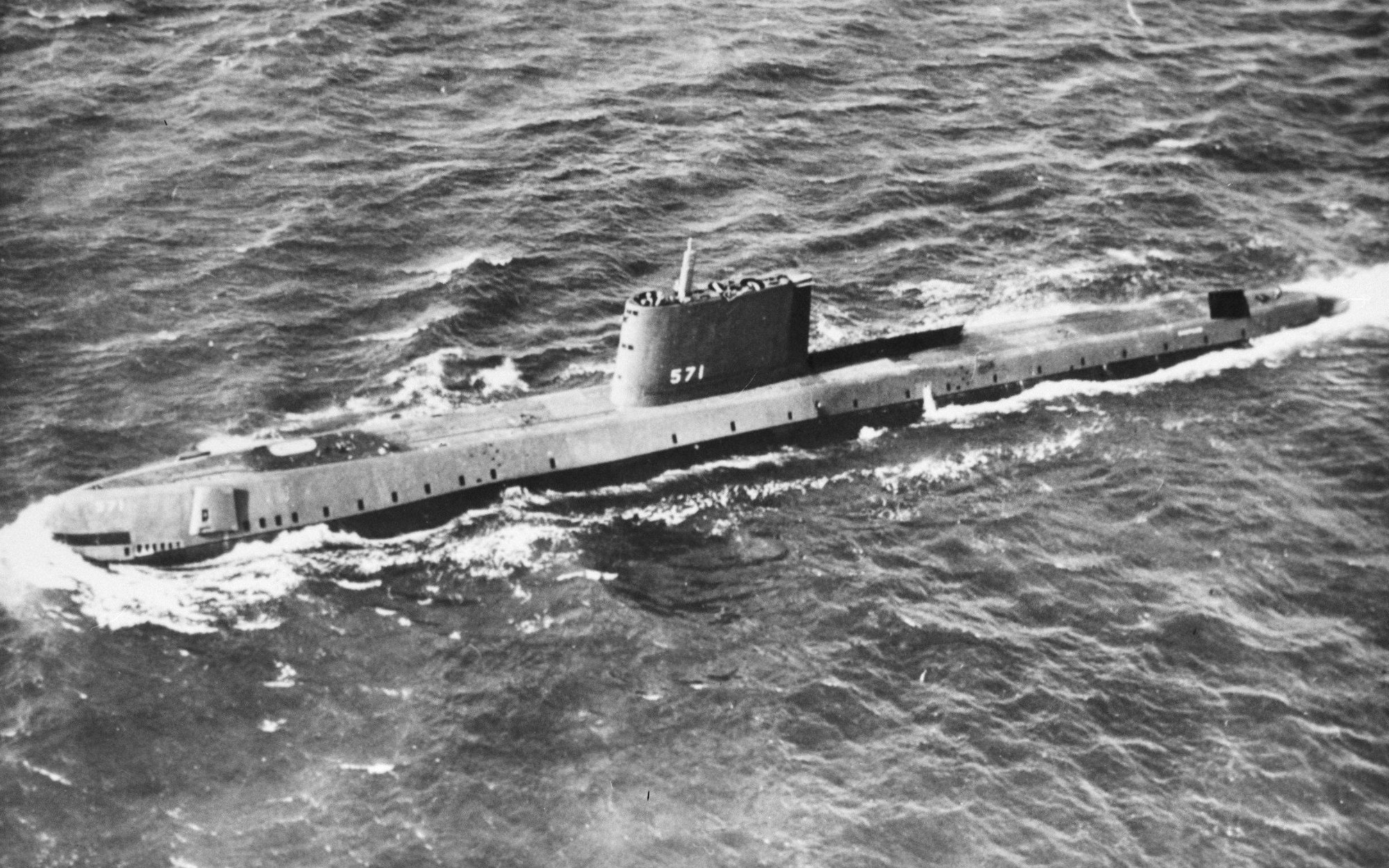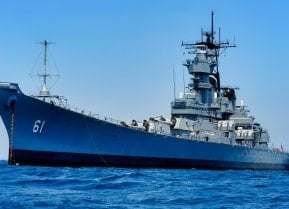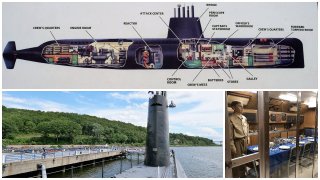USS Nautilus: The U.S. Navy's First Nuclear Submarine Ever Was Astounding
The USS Nautilus incorporated the more significant Underwater Propulsion Power improvements made to her Gato, Balao and Tench-class predecessors. In her early years, the legendary submarine achieved multiple records and, in 1958, accomplished the first voyage under the geographic North Pole
USS Nautilus: The U.S. Navy's First Nuclear Submarine Ever - In July of 1951, Congress authorized the construction of the world’s first-ever nuclear-powered submarine. Only a few years prior, the Navy established its Nuclear Power Branch, commencing a revolutionary development in ship propulsion.
The new department’s leader- naval officer Adm. Hyman Rickover, pioneered America’s atomic program. Although Rickover was a controversial figure, he succeeded in creating and delivering the world’s premier nuclear submarine years ahead of schedule.
Following over a year and a half of construction, the USS Nautilus was officially launched in 1954 when First Lady Mamie Eisenhower broke a bottle of champagne across the ship’s bow. By January 17, 1955, the submarine’s first Commanding Officer, Commander Eugene P. Wilkinson, signaled one of the most memorable messages: “Underway On Nuclear Power.”
She then traveled more than 1,300 miles in just under 90 hours on a voyage to Puerto Rico. Later that year, the Nautilus further impressed the Navy with its role in military exercises, torpedo tube testing, and various naval base visits throughout the East Coast.
An Overview of the Infamous USS Nautilus
The USS Nautilus incorporated the more significant Underwater Propulsion Power improvements made to her Gato, Balao and Tench-class predecessors. In her early years, the legendary submarine achieved multiple records and, in 1958, accomplished the first voyage under the geographic North Pole. The Nautilus was powered by the Submarine Thermal Reactor which was later redesignated as the S2W reactor- a pressurized water reactor developed by Westinghouse Electric Corporation for the U.S. Navy.
The formidable submarine was ahead of its time, as most other ships were still using World War II-era tactics, notably waiting for adversarial submarines to surface to attack them by dropping depth charges or via airplanes. Powered by nuclear energy, the Nautilus ran silent and deep without needing to surface. This critical design was later incorporated in all of the U.S. nuclear-powered submarine and surface combat ships and has been adapted by other militaries for naval nuclear propulsion.
Notably, the Nautilus’ hull was German in origin, as the U.S. had not yet developed the teardrop-shaped hull design that is incorporated in more modern American submarines. For this reason, the Nautilus appeared similar in design to the German Type XXI-U boat. The foreign hull allowed the Nautilus to travel at speeds roughly 5 knots greater than her conventionally-powered predecessors.
However, the German hull limited the Nautilus from reaching her intended top speeds of 30+ knots.
Perhaps Nautilus’ most memorable journey was through the Arctic. By 1957, the submarine had already been in action for 60,000 miles when it embarked on a mission never attempted by past submarines. Using the technology of the North American Aviation N6A-1 Inertial Navigation System, the submarine was able to navigate at extreme latitudes without needing to resurface. The Nautilus traveled underneath ice until surfacing near Greenland, finishing her successful stint around the North Pole.
While the risk that the vessel would become disoriented underneath the ice was probably, the Nautilus’ commander at the time weighed the possibility of using torpedoes to blow holes in the ice to allow the submarine to surface if necessary.
In the late 1950’s, following her sail around the North Pole, the Nautilus entered Portsmouth Naval Shipyard in Maine to undergo her first complete overhaul. At this time, the submarine’s second fuel core was replaced, the first time of any nuclear-powered vessel. The refit was essential since the submarine had already logged its 200,000th mile. Following this overhaul, the submarine embarked on her first deployment with the Sixth Fleet in the Mediterranean Sea. The nuclear-powered submarine spent the majority of her service career assigned to Submarine Squadron 10 based in New London, Connecticut.
What Made Nuclear USS Nautilus Special
Since the Nautilus was essentially the guinea pig of nuclear submarines, she did not come without her shortcomings. Perhaps the most pressing issue surrounding the vessel was her vibrations. In fact, the ship’s vibrations were so bad that the Nautilus’s sonar was considered useless traveling above eight knots. Former crew members of the submarine also indicated that this vibration, caused by the flow of water behind its sail, required that those onboard shout to be heard in the torpedo room.

While the Nautilus wasn’t perfect, she certainly remains a legendary and critical part of the U.S. Navy’s history.
In 1979, the memorable ship set out from Groton, Connecticut, on her final voyage, where she reached her last day underway one month later in Vallejo, California. The Nautilus was decommissioned one year later.

As described by Naval History and Heritage Command Director Samuel Cox, “The accomplishments of the crews of the Nautilus over the years, serve as inspiration to those who serve in submarines today on missions every bit as important to our national security as those of the past. We encourage the public, and submariners of today, to visit Nautilus to get a sense of what the ‘Silent Service’ has done, and continues to do, for our nation.”

About the Author: Maya Carlin
Maya Carlin, National Security Writer with The National Interest, is an analyst with the Center for Security Policy and a former Anna Sobol Levy Fellow at IDC Herzliya in Israel. She has by-lines in many publications, including The National Interest, Jerusalem Post, and Times of Israel. You can follow her on Twitter: @MayaCarlin.
All images are Creative Commons.


